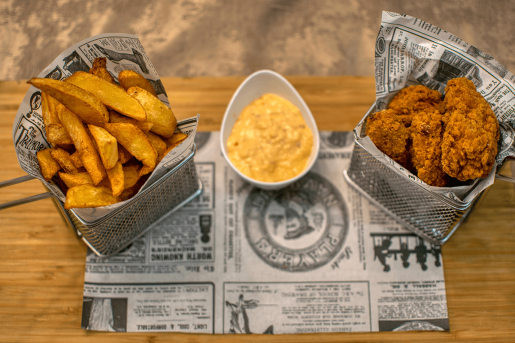The truth about fried food
Fried food is a culinary staple in many kitchens. While we often think of fried food as unhealthy, the item you choose to fry and the method of frying impacts the nutritional value of the meal. A Baylor College of Medicine registered dietitian explains how to nutritiously prepare and eat fried food in moderation.
 “The method of frying is important, but so is the food you are frying,” said Dr. Luis Rustveld, registered dietitian and assistant professor of family and community medicine at Baylor. “If you are frying calorically dense foods, as opposed to nutrient-dense foods, think about the impact it has on your health.”
“The method of frying is important, but so is the food you are frying,” said Dr. Luis Rustveld, registered dietitian and assistant professor of family and community medicine at Baylor. “If you are frying calorically dense foods, as opposed to nutrient-dense foods, think about the impact it has on your health.”
When frying food, cook nutritious foods such as fruits, vegetables, grains and oily fish, which has ample monounsaturated and polyunsaturated fats. If you plan to batter or coat the food, use a coating that prevents the food from absorbing the oil, especially when deep frying or pan frying. All-purpose flour causes more absorption of the oil, so try to use gluten-free flours such as cornmeal or rice flour to prevent the absorption of oils. Adding leavening agents like baking soda to the batter allows the food to not absorb as much oil. He also suggests blotting the food after frying to remove some of the oils.
Deep fry
Deep frying requires cooking at high temperatures of about 350 to 400 degrees with oils that can withstand high smoke points to create a crust, so the oils do not get absorbed. Heart healthy oils for deep frying include peanut oil, sunflower oil or safflower oil.
When food is exposed to high temperatures, this method can result in formation of advanced glycation end products, which are inflammatory compounds that are bad for the heart if exposed to them on a long-term basis. The oils absorbed also increase the caloric content of the product.
“If you’re using oils that are not appropriate for that frying method, you have potential for release of inflammatory compounds, which can affect vascular health in the long term,” he said.
Rustveld explains that if you deep fry correctly and pay attention to the temperature and batter, you can enjoy deep fried foods in moderation.
Pan fry
Pan frying is a method that requires lower temperatures and incorporates monounsaturated fats, such as olive oil, canola oil or avocado oil. This is a healthier alternative since it requires cooking with more nutritious oils at lower temperatures. Pan frying also decreases the chance of inflammatory compounds being released.
Rustveld also recommends using a combination of cooking methods, such as pan-searing and pan-frying fish. Use a small amount of olive oil to pan fry the fish for a short amount of time before transferring it to the oven to bake to finish cooking.
Air fry
Air frying is the healthiest form of frying, using little to no oil. Compared to deep frying, air frying is a healthier substitute since hot air circulates around the food, creating a crust that does not affect nutritional value.
“Air frying is basically a hybrid between a deep fryer and a convection oven,” Rustveld said. “If you like to eat fried foods more often, air frying would be a better option.”
He emphasizes frying nutrient-dense foods and recommends air frying sweet potatoes, chicken, vegetables or fish.
“No matter what you fry, if it’s exposed to high temperatures for long periods of time, especially if you use a lot of oils, you can be at risk for cardiovascular disease or other chronic diseases,” Rustveld said. “The key is to enjoy your favorite foods, but also think about preparing things in a healthier way like baked, grilled or broiled and use these methods as a way to eat your favorite foods in moderation.”
Learn more about Baylor Medicine Family and Community Medicine.
By Homa Shalchi



